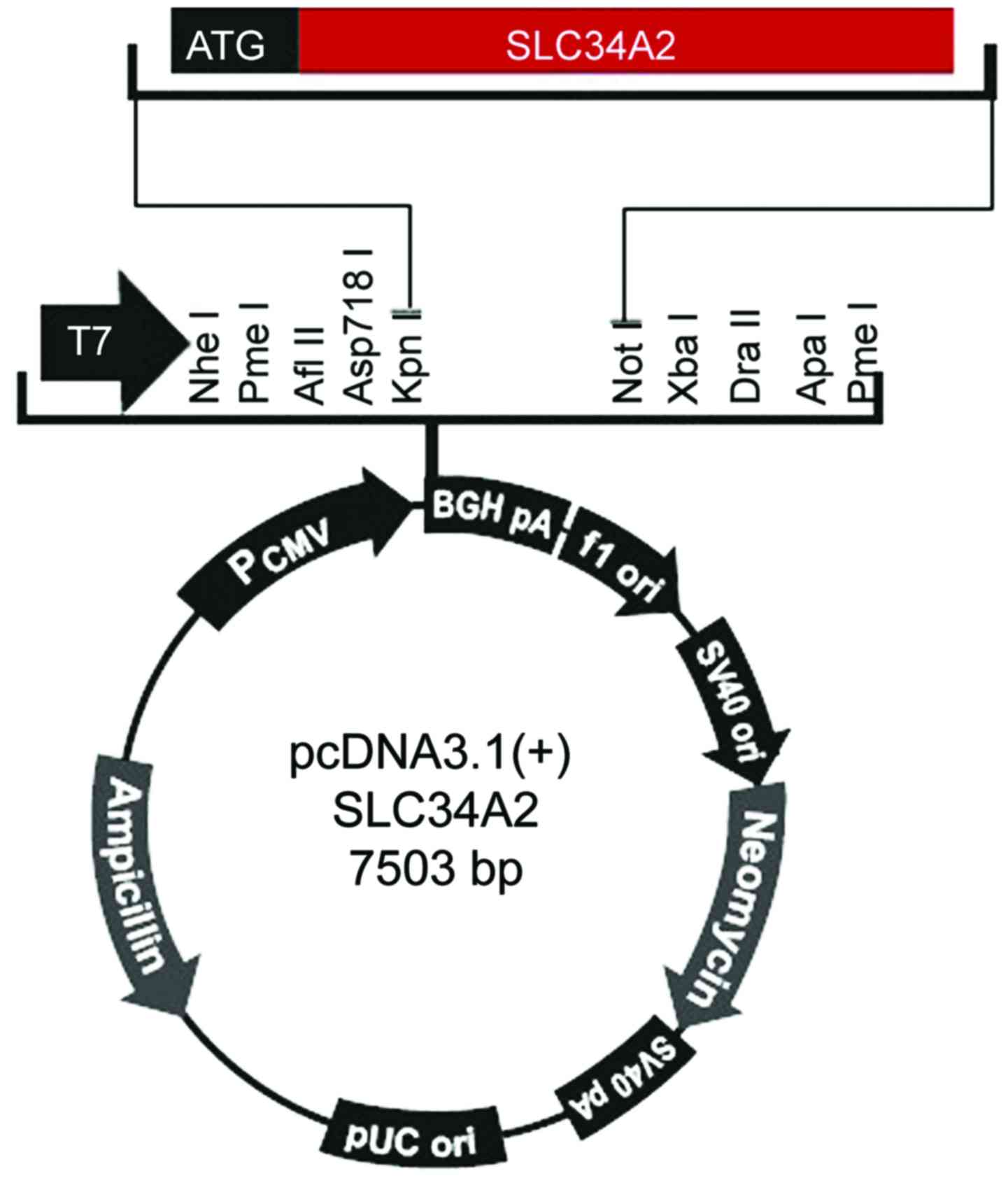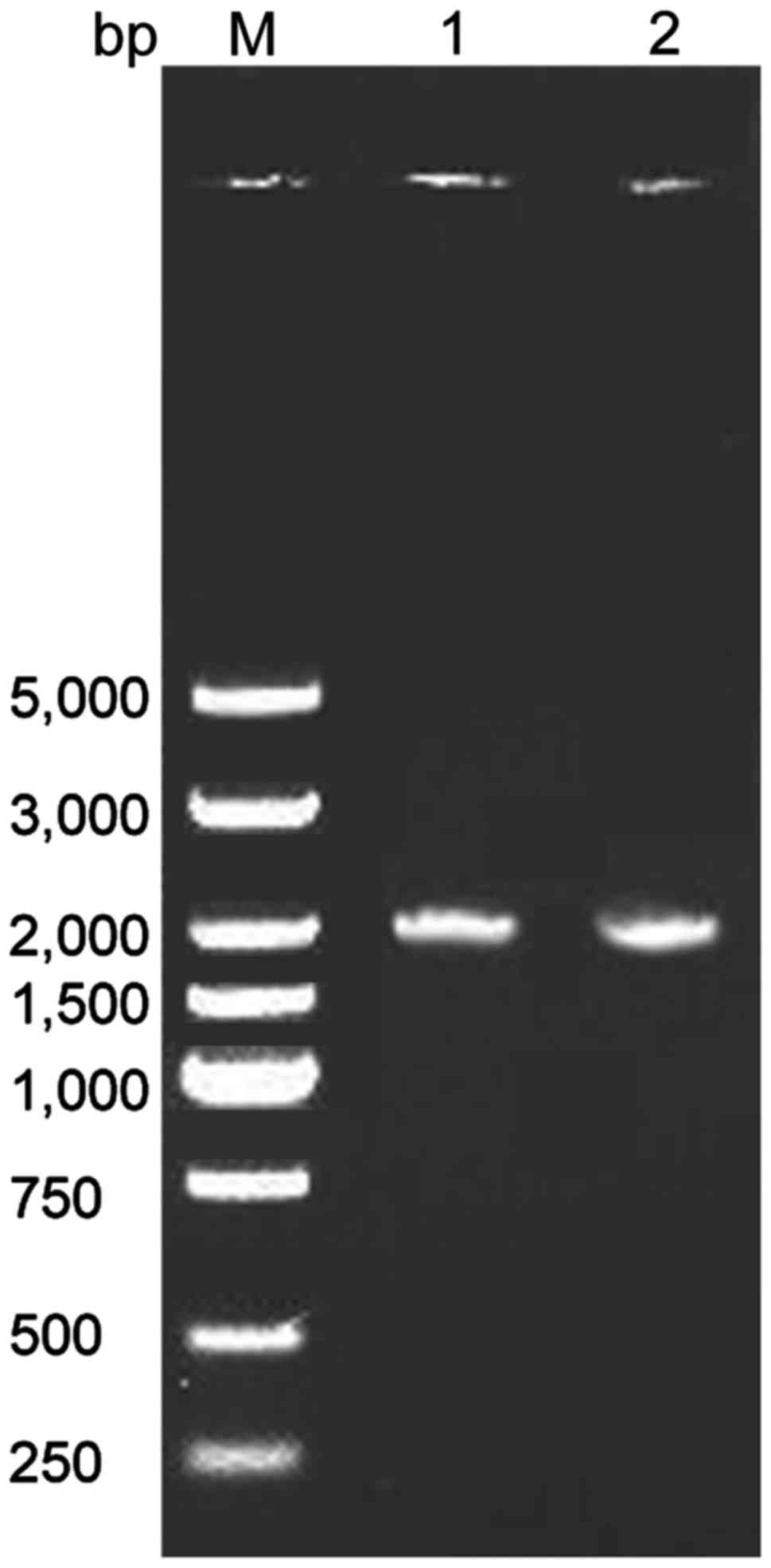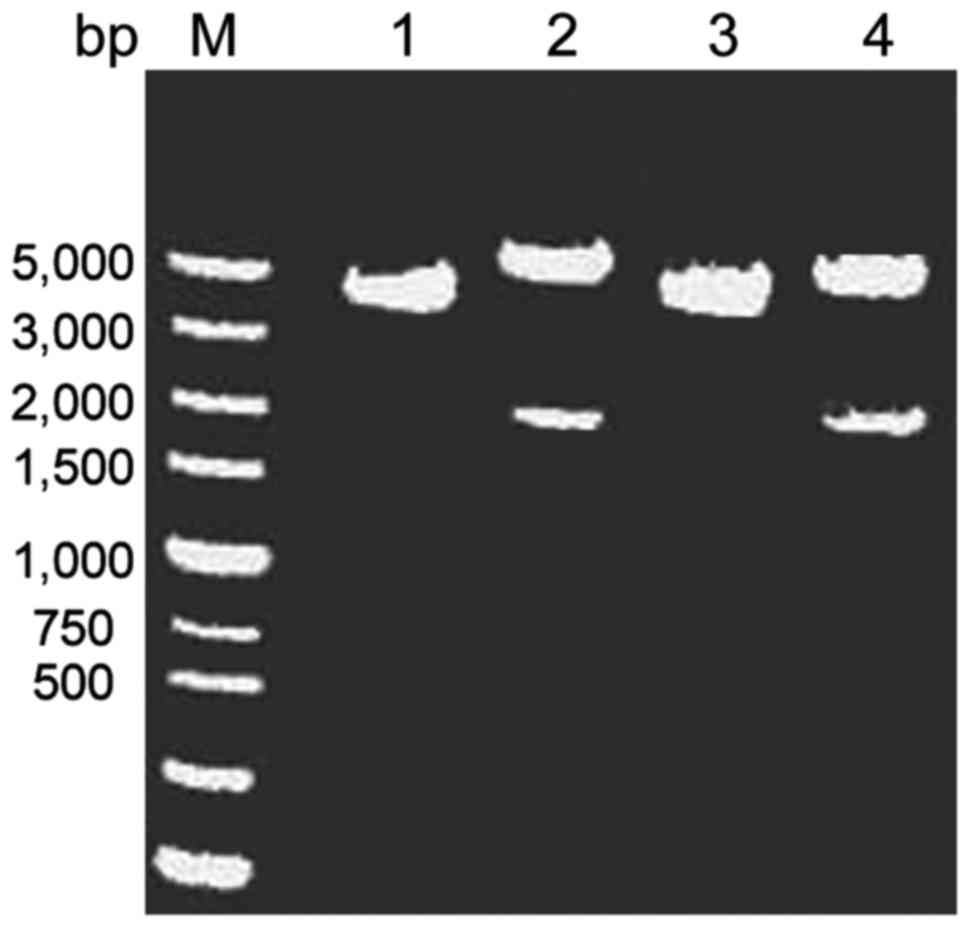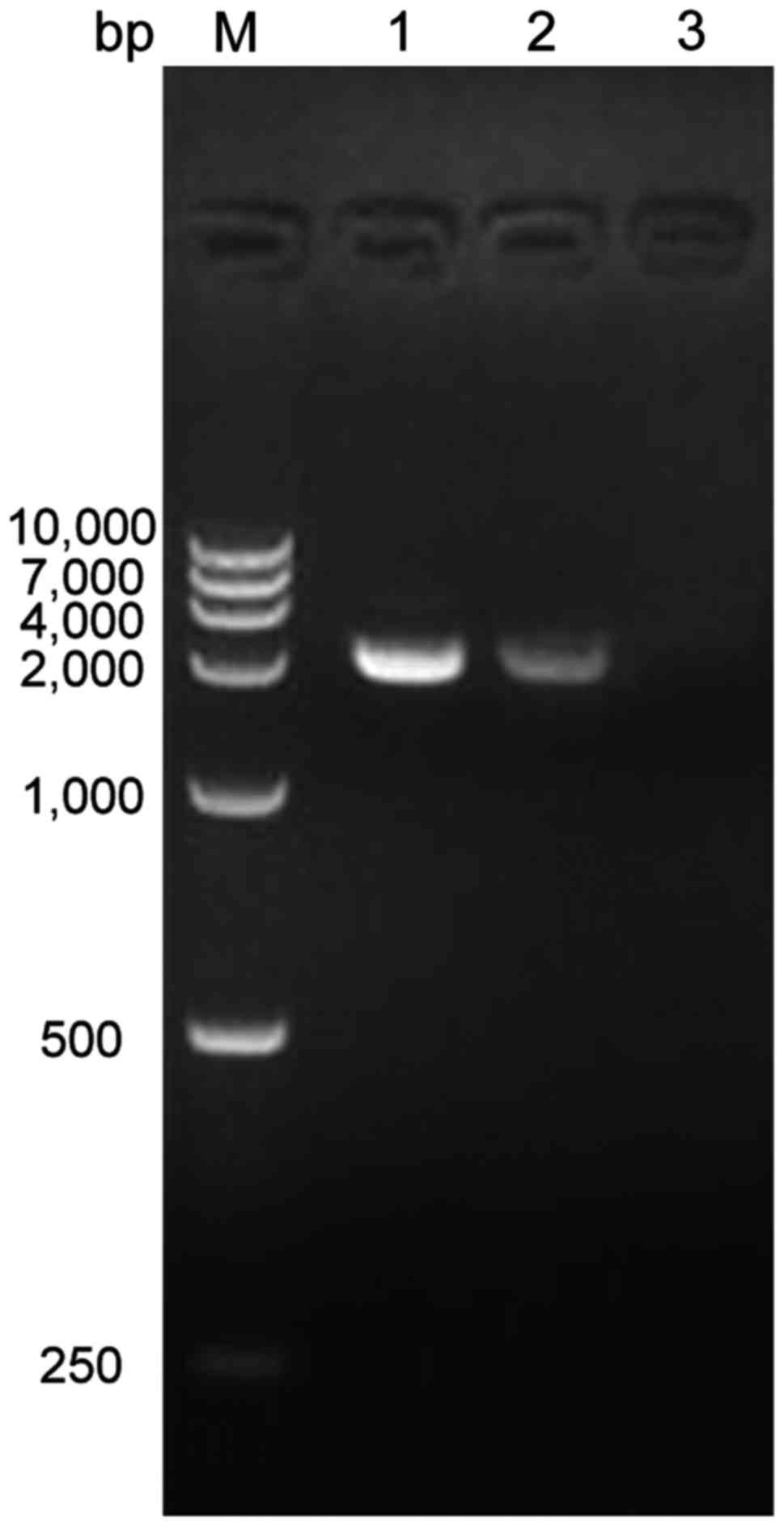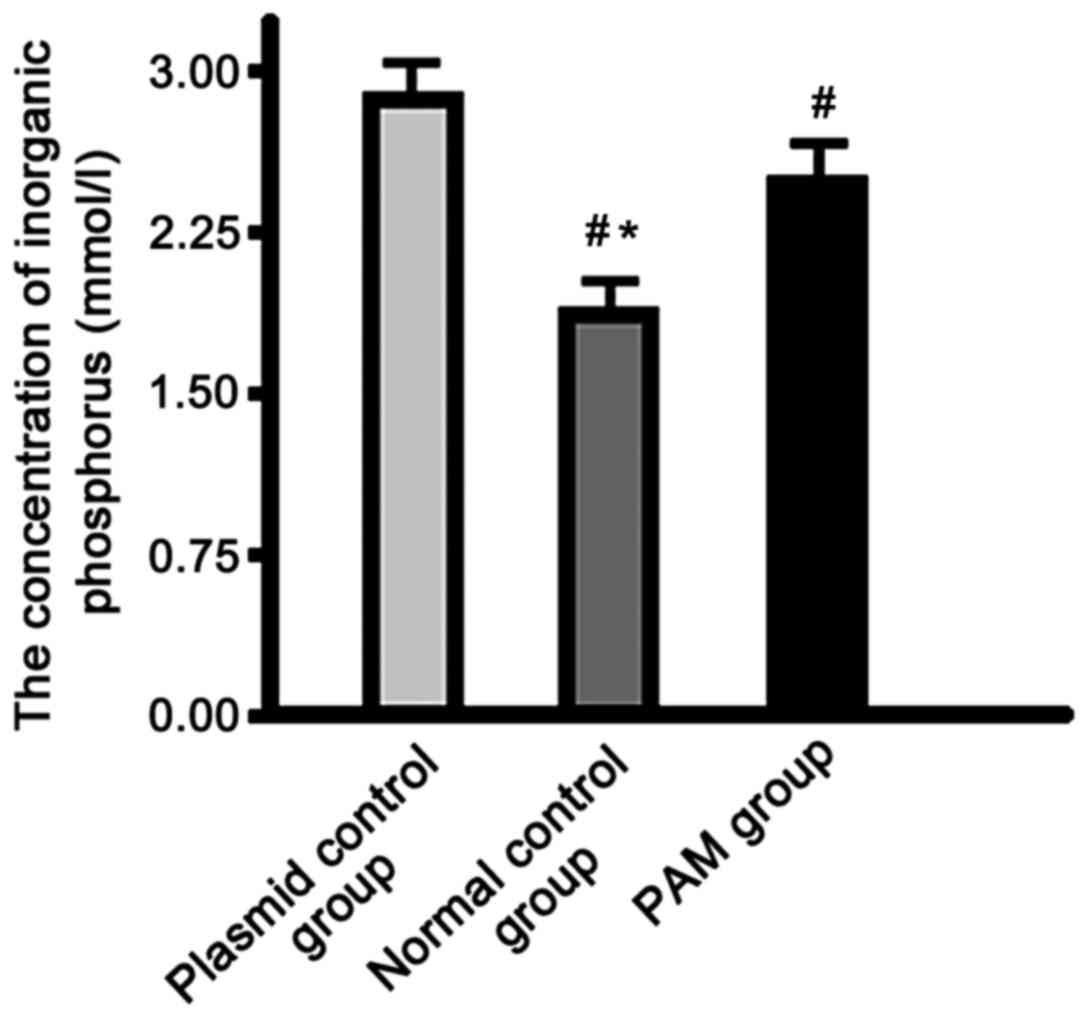Effect of SLC34A2 gene mutation on extracellular phosphorus transport in PAM alveolar epithelial cells
- Authors:
- Published online on: October 27, 2017 https://doi.org/10.3892/etm.2017.5380
- Pages: 310-314
-
Copyright: © Ma et al. This is an open access article distributed under the terms of Creative Commons Attribution License.
Metrics:
Total
Views: 0 (Spandidos Publications: | PMC Statistics:
)
Total PDF Downloads: 0 (Spandidos Publications: | PMC Statistics:
)
Abstract
A mutation in the IIb sodium phosphate transporter SLC34A2 gene has recently been described in pulmonary alveolar microlithiasis (PAM) patients. Experiments in this study were aimed at confirming the role of the gene product in PAM by comparing phosphorylated products in extracellular fluid of alveolar epithelial cells overexpressing the SLC34A2 gene or its mutated version. Eukaryotic expression vectors were constructed and transfected into A549 human alveolar epithelial cells. There were three groups of cells including those transfected with empty vector plasmid pcDNA3.1(+) (plasmid control group), those transfected with normal SLC34A2 gene expressed from pcDNA3.1 (normal control group), and those transfected with a version of the PAM SLC34A2 gene linked to the pcDNA3.1(+) (PAM group). Transfection efficiencies were detected by reverse transcription-polymerase chain reaction (RT-PCR). At 48 h after transfection, the concentration of inorganic phosphorus in the culture medium was detected using an automatic biochemical analyzer. Our results showed the concentration of inorganic phosphorus in the supernatant of the normal control group was significantly lower than that in the plasmid control and PAM groups (P<0.01), and the concentration in the PAM group was significantly lower than that in the plasmid control group (P<0.01). Based on our findings it is possible that the SLC34A2 gene mutation is the cause of the pathogenic changes observed in PAM patients, given that the function of the phosphate transporter seems to be affected and it is conceivable that it would lead to extracellular fluid alterations in vivo.



